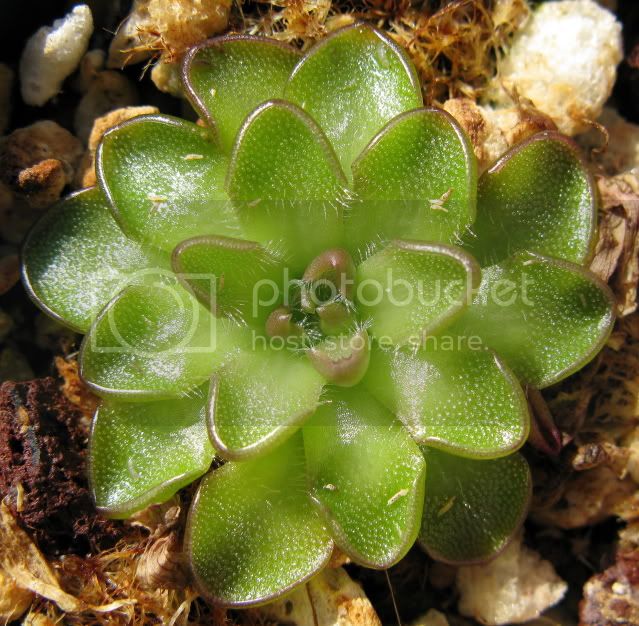I received this Pinguicula species from CZ Plants, back in June, 2008 labeled as P. kondoi.
But it seems that the real P. kondoi, according to some experts, is not really in cultivation, and what is labeled as such is actually P. reticulata.
Either way, this is still a very nice mexi-ping. (Mexican butterwort species)

This plant has been kept very dry over the last few months, as evidenced by the dried out moss surrounding this plant's rosette.
I started watering it again a couple of weeks ago, and gave it a taste of some tropical springtails yesterday, which should serve to further whet its appetite for more live prey.
These butterworts make excellent companion plants for orchids and other household indoor plants that have a tendency to harbor fungus gnats and their grub-like larvae.
The first time i placed a butterwort next to my indoor plants, within a few days it looked like someone had taken a black pepper shaker and liberally sprinkled it over this plant's sticky gland covered leaves, such was it's effectiveness at attracting, capturing and digesting the local fungus gnat population.
dvg
But it seems that the real P. kondoi, according to some experts, is not really in cultivation, and what is labeled as such is actually P. reticulata.
Either way, this is still a very nice mexi-ping. (Mexican butterwort species)

This plant has been kept very dry over the last few months, as evidenced by the dried out moss surrounding this plant's rosette.
I started watering it again a couple of weeks ago, and gave it a taste of some tropical springtails yesterday, which should serve to further whet its appetite for more live prey.
These butterworts make excellent companion plants for orchids and other household indoor plants that have a tendency to harbor fungus gnats and their grub-like larvae.
The first time i placed a butterwort next to my indoor plants, within a few days it looked like someone had taken a black pepper shaker and liberally sprinkled it over this plant's sticky gland covered leaves, such was it's effectiveness at attracting, capturing and digesting the local fungus gnat population.
dvg

